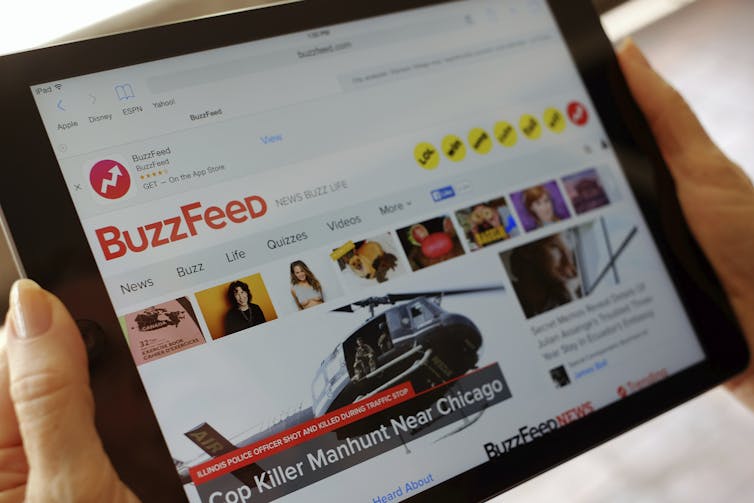Journalism is throughout the midst of an existential catastrophe: the profession has undergone a few years of declines in readership, revenue and public perceptionwith no obvious end in sight.
Many throughout the enterprise contemplate that one of many easiest methods for newsrooms to get effectively every revenue and public perception is to boost their relationship with their audiences.
Data organizations as quickly as boasted monumental income margins, which left many feeling assured that they knew exactly what they needed to do with a goal to achieve most of the people. In consequence, journalists not usually sought strategies from their readers.
However, the looks of the net launched monumental drops in journalism revenue. Between 2000 and 2015, newspaper advert revenue throughout the U.S. fell, as an Atlantic article describes, “from about $60 billion to about $20 billion, wiping out the great factors of the sooner 50 years.”
As a result of the data enterprise struggles to recapture this an increasing number of distant financial foothold, many inside it are certain that the first step forward is to no longer take their audiences without any consideration. In its place, they have to be further deliberate about incomes the viewers’s loyalty.
However this newfound consensus contained in the enterprise has resulted in various uncertainty: How, exactly, should journalists do this?

Shutterstock/by Abscent
One goal, utterly completely different methods
Newsroom strategies for increased understanding and connecting with their readers, viewers and listeners differ from one group to the next. These variations matter because of journalism’s future, and the viewers’s perform in it, will rely in no small half on which of these strategies succeed.
Some rely upon digital metrics to search out out what their readers like and dislike, and use that data to supply them further of the earlier and fewer of the latter. The knowledge agency BuzzFeed, as an illustration, is thought for its use of data to predict which of its tales will “go viral.”
Others rely upon further qualitative data. Metropolis Bureaua Chicago-based, nonprofit data group, hosts weekly “public newsrooms” meant to “gather journalists and most of the people to debate native factors and share sources and data to foster increased native reporting.”
What accounts for journalism’s varied approaches to the data viewers?
I evaluation the connection between journalism and most of the people. In two simply currently printed analysis, my collaborators and I concluded that how journalists perceive their audiences powerfully impacts what they do to achieve them.

AP/Richard Vogel, File
Making which means from viewers metrics
The first look at, printed throughout the instructional journal Journalism Analysisdrew on interview and observational data collected from an enormous each day newspaper.
My co-author Edson C. Tandoc Jr. and I examined how journalists use viewers measurement data to know who their work reaches.
We found that, when launched with various delicate devices on the market for analyzing reader habits, the newsroom’s staff tended to favor viewers dimension measures above all others. They wished to know which story purchased basically essentially the most readers.
The journalists we spoke to outlined their take care of viewers dimension metrics in two strategies.
The first was monetary: Media firms depend on selling and subscription revenue. The larger the viewers, the additional advertisers pays to achieve it and the additional financially secure the group.
The second related to the watchdog mission of the newspaper: The journalists argued that their tales can’t make an have an effect on on their group if no person reads them.
The reliance on these metrics made clear an very important assumption these journalists held regarding the nature of their viewers. After they used metrics to observe that readers tended to click on on on “mushy” data tales (e.g., lifestyle, sports activities actions, consuming) and by no means “laborious” data tales (e.g., metropolis hall), numerous the journalists we interviewed concluded {{that a}} majority of most of the people is simply not contemplating what they deemed “very important” public affairs data.
As certainly one of many paper’s senior editors outlined:
The mission journalism — the watchdog journalism, the masking metropolis events, making certain that people aren’t getting screwed over, and so forth. … There’s not ample people finding out these tales … to take care of us the place we in the mean time are. … The money would not exist there.
Briefly, the rising emphasis on understanding and measuring the data viewers revealed that many inside this newsroom perceive reaching an enormous viewers and publishing public service journalism as separate pursuits.
Whereas we’ll’t generalize from our look at of this one group, various completely different instructional analysis have equally seen that journalists affiliate what people click on on on with what they like. Since people are more likely to click on on further mushy data than laborious, this affiliation has led some journalism college students to worry: “The market requires giving most of the people what it wishes; democracy requires giving most of the people what it needs.”
From measurement to engagement
Not everyone in journalism shares this assumption. A rising group of stories enterprise innovators believes a majority of most of the people is genuinely contemplating finding out about civic factors, no matter what just a few of the data appear to say.
This completely different group believes it’s not a shortage of curiosity that retains residents away from these tales, nevertheless a disdain for a approach these tales are being reported.
They argue most of the people feels alienated by, and distrustful of, journalism that not usually solicits their views and, consequently, fails to exactly replicate their lives. To restore this, journalists should further actively “work together” with most of the people. As a result of the journalism researchers Thomas R. Schmidt and Regina Lawrence write“Many an increasing number of see partaking with audiences and communities as a key approach to handle relevance and acquire sustainability.”
The motivations and pursuit of engaged journalism obtained right here up in a single different look at simply currently printed throughout the instructional journal Journalism Observewhich I co-authored with Valerie Belair-Gagnon and Seth C. Lewis.
We examined how journalists at two utterly completely different public media data organizations attempt to engage with their audiences. This evaluation moreover relied on interview and observational data.
We found that these journalists felt strongly about creating options for further important engagement with most of the people than has traditionally been the case, notably with communities the journalists felt had been “uncared for.”
These options included on-line initiatives like soliciting questions from listeners about issues they’re contemplatingalong with offline events like “listening intervals” designed to assemble perception and strengthen ties with minority residents whom these journalists cowl of their reporting – nevertheless do not basically attain with their reporting.
For example, when the 2010 census revealed that Wisconsin led the nation in black male incarcerationthis newsroom hosted a listening session with black males who had been launched from jail.
The journalists we interviewed outlined that the session was led by a school professor who had experience guiding a listening session and making a protected place for people to share their tales.
“We didn’t file it or one thing. We used it further as a way to try to understand the issues that we’re overlooking,” certainly one of many editors who organized the session talked about. “Out of that grew this sense that we weren’t really giving these males a spot … to tell their very personal tales” throughout the newsroom’s reporting.
By pursuing these initiatives, these journalists sought to verify their tales did not solely originate from what they believed to be a really highly effective factors going by their readers.
In its place, they wished to create options to take heed to from their readers – notably people who they often hear from – about what they believed needed to be lined.
Similar goal, utterly completely different assumptions
These two analysis current that journalism’s rising take care of the data viewers has not been accompanied by a rising consensus about who these audiences comprise and what they want from data.
Even when journalists agree that the viewers consumes a lot much less public affairs data than it does completely different sorts, they draw utterly completely different conclusions about why that’s the case. Some blame the viewers, others blame the journalists.
One issue that these analysis make clear: As a result of the data enterprise struggles to survive, many inside it an increasing number of contemplate their biggest path forward lies with an improved relationship with most of the people.
However, the steps journalists take to do the work of bettering that relationship stays an open question.
